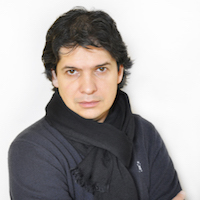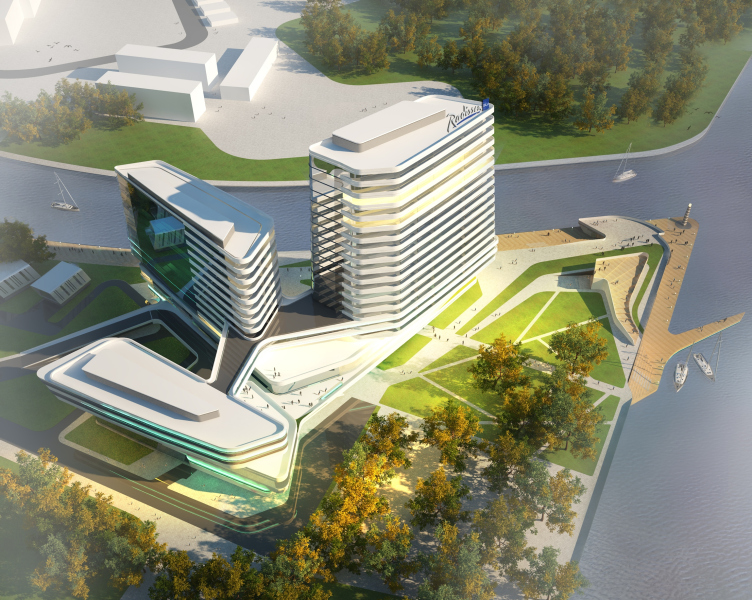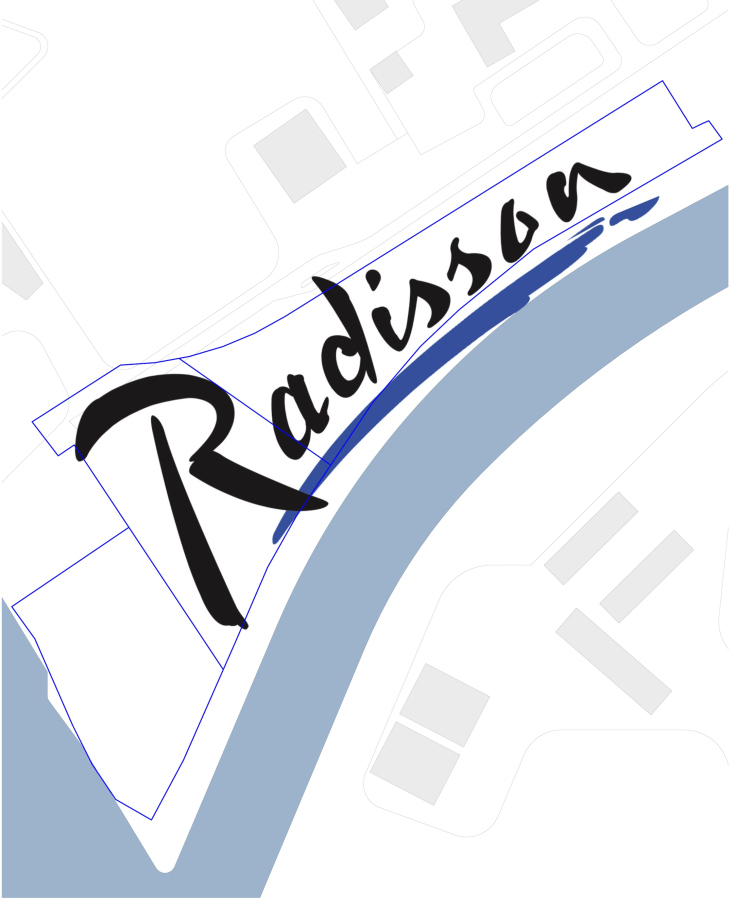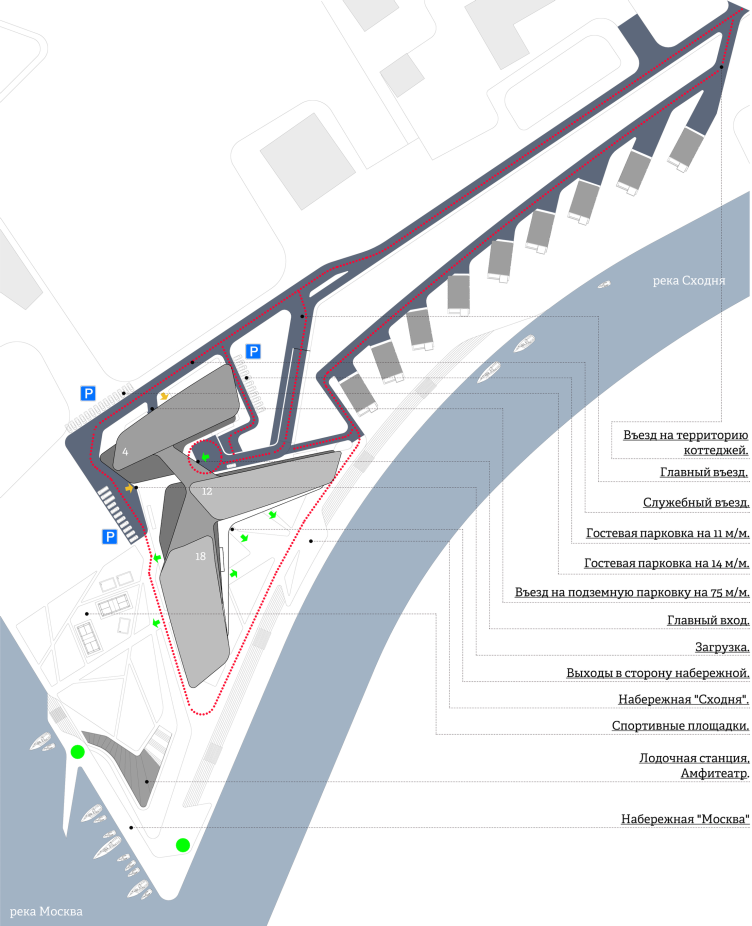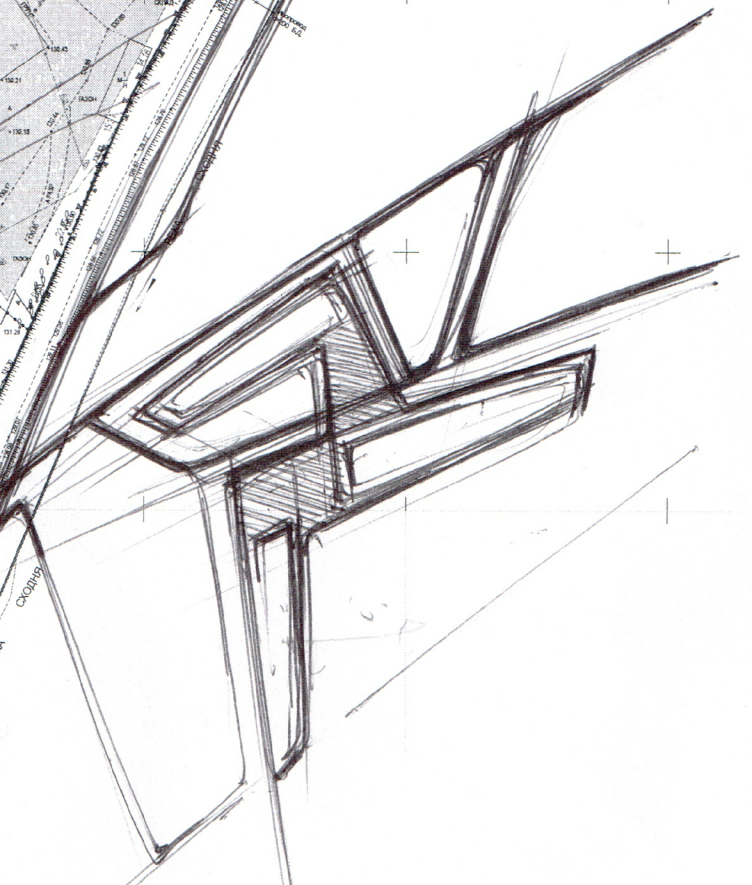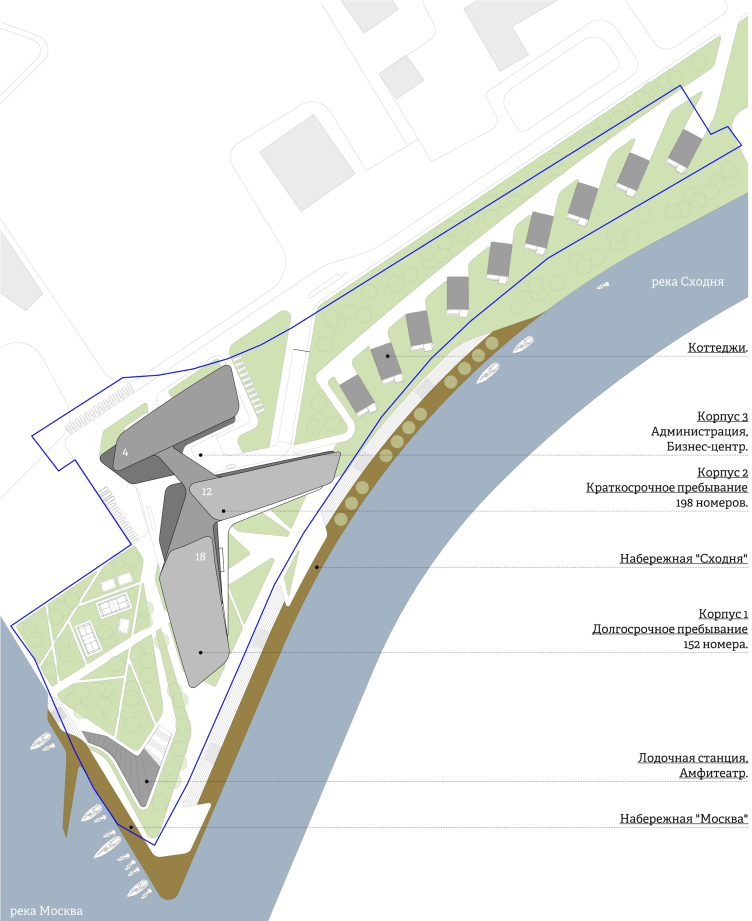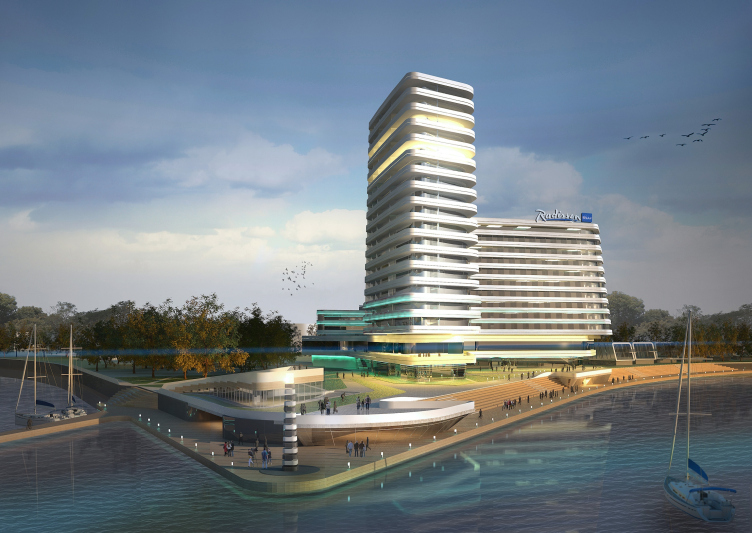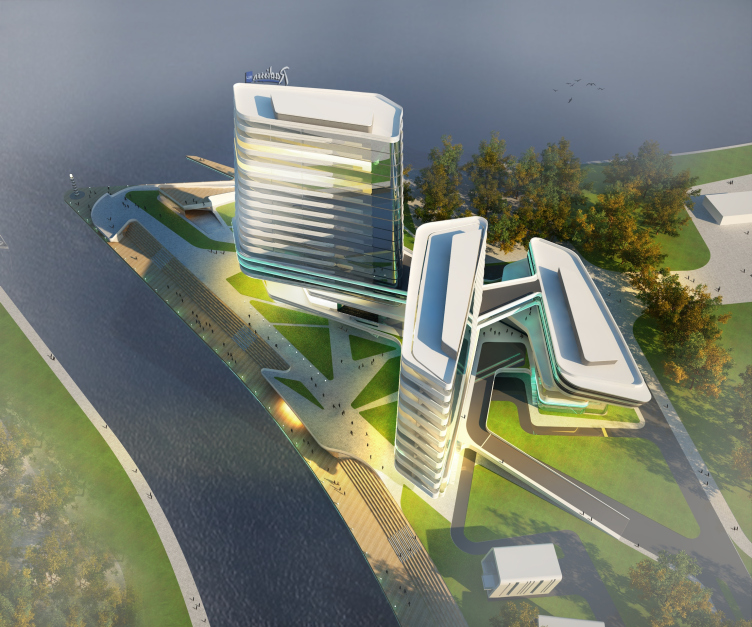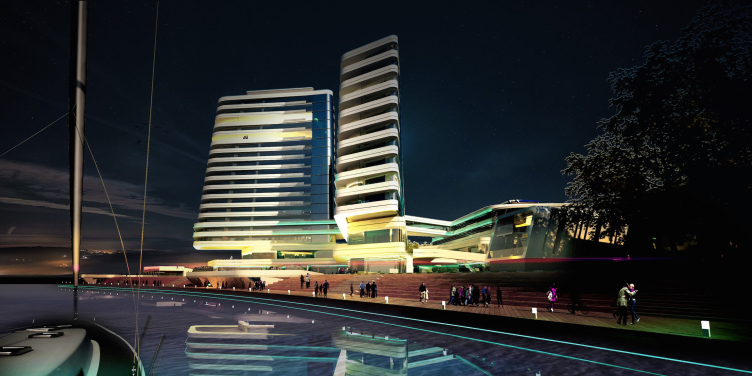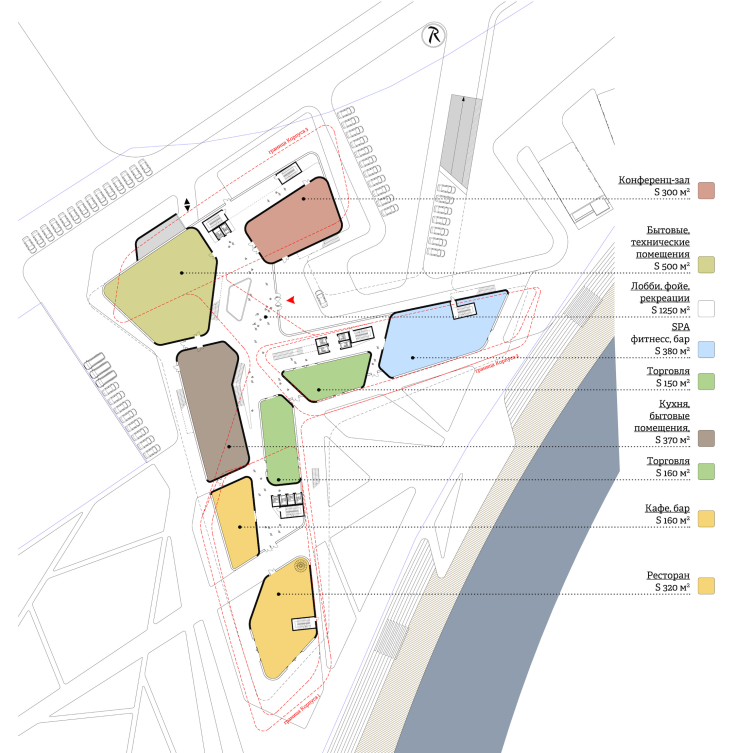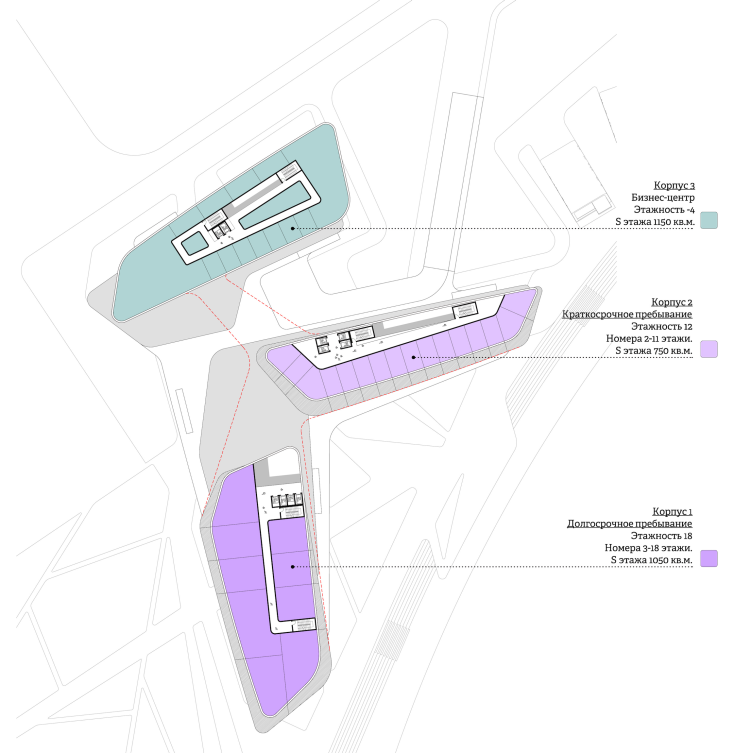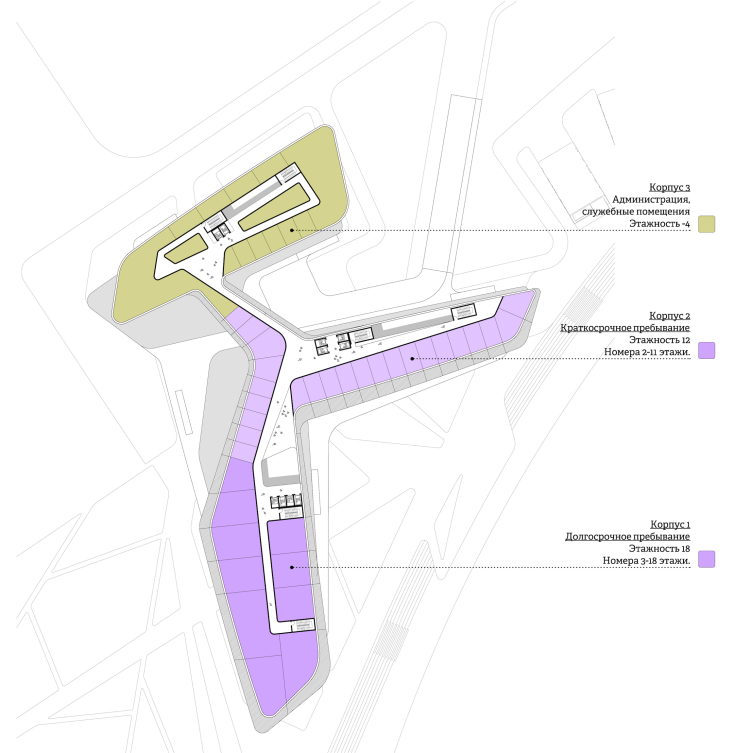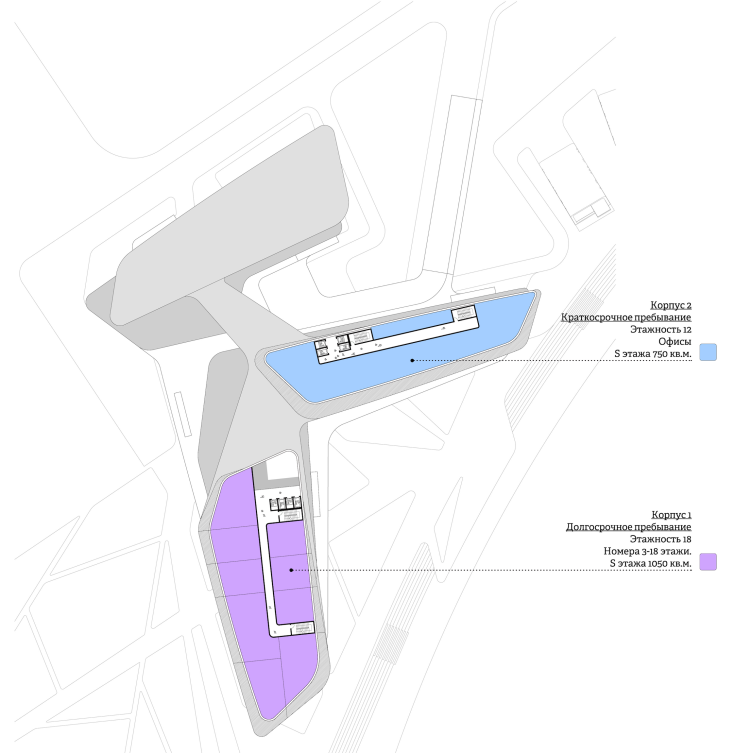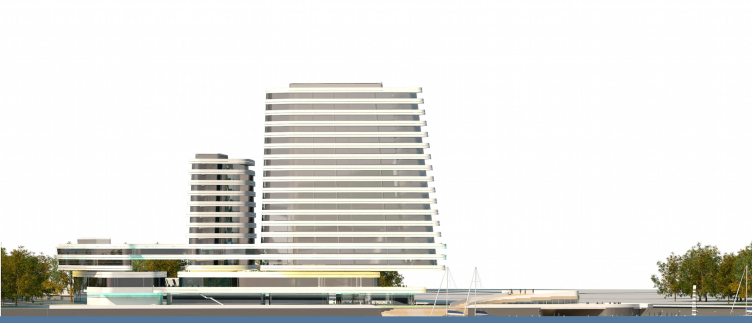We have already covered the results of the competition for the Radisson Blue hotel project and its winners and a few other contest projects that were not included into the top three. Many architectural bureaus took part in the competition and a lot of proposed ideas deserve special mentioning. More than that, the supposed construction site is located in one of the most beautiful places of Moscow, where the Moskva meets the Skhodnya river and with a view of Stoginskaya plain. Today, there is a plant of construction materials here, which is supposed to be replaced by the hotel. The task of the participants was to: create a high-altitude dominating construction which can be seen both from Volokolamskoe Shosse and from MKAD, and comfortly arrange the river banks providing access to water – and all this without conflict with the natural environment.
The architects of “4izmerenie” almost literally founded their concept on the logo of the operator. The prolonged site of a little under three hectares which begins at the split allowed to freely and widely write “Radisson” within its boundaries even preserving the underlining. The contours formed the base of the master-plan and functional zoning. In the plan of the main buildings, one can recognize the capital letter “R” as if formed of three stones thrown from the river. The cubes of the villas built along the Skhodnya remind small letters. The terraced embankment became the underlining. The drawing of the plan was decorated with smoothe curves of the approach roads, rampants and walking trails.
The concept of the hotel complex Radisson Blu Moscow Riverside. Bird's eye view © 4izmerenie
The concept of the hotel complex Radisson Blu Moscow Riverside. Concept © 4izmerenie
The concept of the hotel complex Radisson Blu Moscow Riverside. Driving and pedetrian flows layout © 4izmerenie
The concept of the hotel complex Radisson Blu Moscow Riverside. Sketch © 4izmerenie
The concept of the hotel complex Radisson Blu Moscow Riverside. Master plan © 4izmerenie
However, the authors paid as much attention to the perception of the complex within the river and floral panorama of the environment. The highest eighteen-storey building with long-stay rooms is located closest to the water, by the split. Its extended facades overlook Moskva-river on the one side, and Skhodnya-river on the other, so most of the guests will have beautiful views of the river.
The second, twelve-storey hotel block with rooms for short-term stay also opens towards the river, but with its two, not three facades. Its elongated northern wall faces the mainland: there, both the panorama and the insolation are not so great, which is why the architects turned all the windows of the guests to the river, and concentrated the mechanical rooms, vestibules and elevator blocks along this back wall. The third low-rise volume of the administrative building is located inside of the lot.
Out of all the associations that build up with a view of the “Radisson” suggested by “4izmerenie”, southern and resort images admittedly take the first place. The glass walls belted with wide ribbons of white terraces remind a parked cruise lineror a mountain with a giant sea bird soaring around it. Even the lighthouse is here intentionally, to complete the composition.
The concept of the hotel complex Radisson Blu Moscow Riverside © 4izmerenie
The concept of the hotel complex Radisson Blu Moscow Riverside. Bird's eye view © 4izmerenie
The concept of the hotel complex Radisson Blu Moscow Riverside © 4izmerenie
The architects claim that one of the most important tasks executed in this project, was the creation of an open permeable and comfortable space on ground level, for pedestrians. And even though in a natural zone it is hard to call it “urban”, still, if implemented, such “oases” usually become the buds of urban comfort. All the internal and external connections on several levels are thoroughly elaborated in the project. From the side of the Shosse, the approach ways are separated – one leads to the main building, and the other to the villas. The main entrance to the complex is lifted to the level of the first floor, connected by a flyover bridge. Here, from a spacious lobby, you can get to any of the residential blocks, which although spatially separated into two volumes, are closely connected by a system of bridges and passages. On the ground level, in the part of the styllobate, there are many openings, arches, inner courtyards; cafes and restaurants with separate entrances are scheduled to be here with an intention to make the public area of the complex active, and the evening walks – no matter if for business conversations or for no specific reason – enjoyable. Along the Skhodnya River, the authors have extended a multilevel terraced embankment with a ramified system of walking tracks. Cafes and mini-squares interchange with fruit gardens and parks. There must be a small beach with a boat station and a sports-ground. So the image of a cruise liner is not accidental: the hotel surrounded by rivers could actually help its guests to plunge into a calm or festive atmosphere – at choice – and to forget for a short while about the crazy Moscow rhythm.
The concept of the hotel complex Radisson Blu Moscow Riverside. Plan of the 1st floor © 4izmerenie
The concept of the hotel complex Radisson Blu Moscow Riverside. Plan of the 2nd floor © 4izmerenie
The concept of the hotel complex Radisson Blu Moscow Riverside. Plan of the 3rd floor © 4izmerenie
The concept of the hotel complex Radisson Blu Moscow Riverside. Plan of the 4th floor © 4izmerenie
The concept of the hotel complex Radisson Blu Moscow Riverside. Plan of the 12th floor © 4izmerenie
The concept of the hotel complex Radisson Blu Moscow Riverside. Section view © 4izmerenie
The concept of the hotel complex Radisson Blu Moscow Riverside. Southwest facade commanding the Moskva River © 4izmerenie




